Ethiopian Americans
Ethiopian Americans are Americans of Ethiopian descent, as well as individuals of American and Ethiopian ancestry.
| Total population | |
|---|---|
| 261,741 (Ethiopia-born, 2016)[1][2] 68,001 (Ethiopian ancestry)[3] 1000 Ethiopian Israelis resident or citizens in the US.[4] | |
| Regions with significant populations | |
| |
| Languages | |
| Religion | |
History
In 1919, an official Ethiopian goodwill mission was sent to the United States to congratulate the Allied powers on their victory during the First World War.[6] The four-person delegation included Dejazmach Nadew, the nephew of Empress Zawditu and Commander of the Imperial Army, along with Blattengeta Heruy Welde Sellase, Mayor of Addis Ababa, Kentiba Gebru, Mayor of Gondar, and Ato Sinkas, Dejazmach Nadew's secretary.
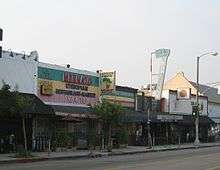
After his official coronation, Emperor Haile Selassie sent forth the first wave of Ethiopian students to continue their education abroad. Almost a dozen Ethiopian students likewise went to the United States. They included Makonnen Desta, who studied anthropology at Harvard, and later became an interim Ethiopian Minister of Education; Makonnen Haile, who studied finance at Cornell; and Ingida Yohannes, veterinary medicine at New York University. Three other students - Melaku Beyen, Besha Worrid Hapte Wold, and Worku Gobena - went to Muskingum, a missionary college in Ohio, two of them later transferring to Ohio State University. Melaku Beyan, who was one of the two who attended Ohio State, later received his medical degree at Howard Medical School in Washington, D. C.
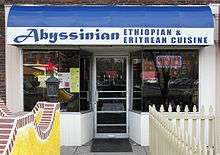
Overall, approximately 20,000 Ethiopians moved to the West to achieve higher education and conduct diplomatic missions from 1941 to 1974 under the Selassie's rule.[7] However, the net movement of permanent immigrants remained low during this period as most temporary immigrants ultimately returned to Ethiopia with a Western education to near assured political success, while the relative stability of the country determined that few Ethiopians would be granted asylum in the United States.[7]
The passing of the 1965 Immigration Act, the Refugee Act of 1980, as well as the Diversity Visa Program of the Immigration Act of 1990, contributed to an increased emigration from Ethiopia to the United States,[8] prompted by political unrest during the Ethiopian Civil War. The majority of Ethiopian immigrants arrived later in the 1990s, following the Eritrean–Ethiopian War. Immigration to the U.S. from Ethiopia during this 1992-2002 period averaged around 5,000 individuals per year.[9]
Since the 1990s, around 1000 Hebrew speaking, Ethiopian Jewish Israelis have settled in the US, with around half of the Ethiopian Israeli community living in New York.[4]
Ethiopian Americans have since established ethnic enclaves in various places around the country, particularly in the Washington D. C., and Minneapolis areas. Fairfax Avenue in Los Angeles, California, has also come to be known as Little Ethiopia, owing to its many Ethiopian businesses and restaurants, as well as a significant concentration of residents of Ethiopian and Eritrean ancestry.[10]
Demographics
According to the U.S. Census Bureau, approximately 68,001 people reported Ethiopian ancestry in 2000.[3] Between 2007 and 2011, there were approximately 151,515 Ethiopia-born residents in the United States.[11] According to Aaron Matteo Terrazas, "if the descendants of Ethiopian-born migrants (the second generation and up) are included, the estimates range upwards of 460,000 in the United States (of which approximately 350,000 are in Washington, D. C.; 96,000 in Los Angeles; and 10,000 in New York)."[7] Unofficial estimates suggest that the Washington, D. C., area has an Ethiopian population of 150,000 to 250,000.[12][13][14]
Culture
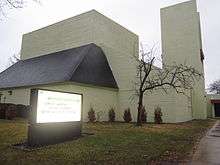
Many Ethiopian Americans are followers of Abrahamic religions, particularly Christianity and Islam. Of these, the majority of Christians belong to the Ethiopian Orthodox Tewahedo Church. It is the largest Christian denomination in Ethiopia.[8] Most Muslim Ethiopian expatriates adhere to the Sunni school. Other Ethiopian immigrants follow the P'ent'ay denomination and Judaism. There has been a general religious revival among Ethiopian Americans, especially in the Orthodox sect. Church attendance in America has also increased relative to that in Ethiopia,[15] and the institutions serve to preserve aspects of Ethiopian culture among American-born Ethiopians. They also act as networks and support systems crucial to the well-being of both recent immigrants from Ethiopia and more established Ethiopian residents. Ethiopian churches in the US are gathering places for the Ethiopian community, where Ethiopian expatriates come together to pray, socialize, stay in touch, and lend support to one another.[8]
For many individuals living within the Ethiopian diaspora, musical performance acts as a uniting social force that allows Ethiopian immigrants in the US to explore their shared culture and identity, while simultaneously partaking in political expression and advocacy.[16] Through public performances (e.g. cultural events on college campuses), these traditions are shown to communities of outsiders who are interested in Ethiopian music and dance within an American context.[16] Such folkloric performances, often based in religion, feature sacred songs performed in various languages of Ethiopia, with instrumental accompaniments and traditional choreographed dances.[16]
Geographic distribution
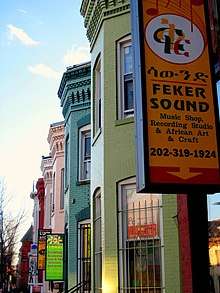
Washington, D. C.
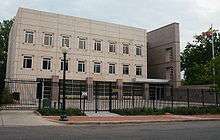
By far, the largest concentration of Ethiopians in the United States are found in Washington, D.C. and the local metro area. Some conservative estimates put the number at around 75,000 residents, while other figures go up to 250,000.[17] The Ethiopian Community Center was opened in 1980 to serve the area's Ethiopian residents.[18] Ethiopian businessmen have also helped revitalize the Shaw and U Street vicinities. Although they mainly live in other parts of the capital, these entrepreneurs purchased old residential property, which they then renovated and converted into new office spaces, restaurants and cafes.[19] Additionally, Ethiopian businessmen in the District of Columbia own various parking garages, taxi firms, social establishments, grocery stores, and travel agencies.[20]
New York City
As of 2012, there were 4,610 Ethiopia-born persons in the New York-Northern New Jersey-Long Island metropolitan area.[5]
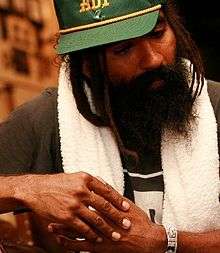
New York Abay Ethiopian Sports Club (NYAESC), and its local football team, is located in the Bronx borough of the city.[21] The Ethiopian football team is usually sited in Van Cortlandt Park, where some Ethiopian marathoners are also found practicing, including New York City Marathon finisher Bizunesh Deba.[22]
Tadias Magazine is an Ethiopian American news source based inside New York, founded by its publisher Ethiopian immigrant Liben Eabisa. Other notable Ethiopian Americans residing in New York city include supermodel Liya Kebede, her husband and hedge fund manager Kassy Kebede, Swedish celebrity chef Marcus Samuelsson, and fashion designer Amsale Aberra.
Seattle
An estimated 25,000 - 40,000 Ethiopians live in Seattle, Washington,[23] with many having come as refugees. The first Ethiopian organization in Seattle, the Ethiopian Refugee Association, was started in 1983 and continues today under the name Ethiopian Community Mutual Association. [24] The Seattle area is also home to three Amharic language radio programs, as well as an Amharic newspaper and radio program. Many Ethiopians live in the neighborhoods of Rainier Beach and the Central District, and Ethiopian restaurants are a fixture of the city's cuisine.
Other places
Around 4,600 Ethiopian residents were officially registered in the North Texas area. However, DFW International estimates that the Ethiopian community is much larger, with about 30,000 members.[25]
The Ethiopian population in Minnesota is one of the most diverse, with a large representation of Amhara and Oromo Ethiopians. The official census shows 13,927 Ethiopian-Americans living in Minnesota,[17] while MPR estimates that 40,000 ethnic Oromos live in the state alongside many Somali Americans.[26]
There are also approximately 25,000 Ethiopians residing in the Columbus metropolitan area in Ohio.[27]
Notable people
- Dereje Agonafer - professor, National Academy of Engineering member
- Aminé - hip hop recording artist
- Selamawi Asgedom - author
- Mulatu Astatke - musician and arranger, father of Ethio-Jazz
- Aster Aweke - singer
- Getachew Bayabil - journalist
- Gelila Bekele - model
- Gebisa Ejeta - geneticist and recipient of the 2009 World Food Prize
- Teshome Gabriel - cinema scholar and professor
- Giday WoldeGabriel - geologist
- Gigi - singer
- Gonjasufi - musician
- Haile Gerima - film director
- Ilfenesh Hadera - actress
- Sossina M. Haile - chemist
- Kelela - singer-songwriter
- Kenna - musician and activist
- Liya Kebede - supermodel
- Elias Kifle - editor of Ethiopian Review
- Dinaw Mengestu - author
- Julie Mehretu - painter
- Muluken Melesse - singer and drummer
- Fatima Siad - fashion model
- Robel Teklemariam - cross country skier
- Gabriel Teodros - hip hop artist
- Seble Wagaw - chemist
See also
References
- "PLACE OF BIRTH FOR THE FOREIGN-BORN POPULATION IN THE UNITED STATES". U.S. Census Bureau. Archived from the original on 2020-02-14. Retrieved 2016-10-29.
- "The Foreign-Born Population From Africa: 2008–2012" (PDF). U.S. Census Bureau. Retrieved 4 October 2016.
- "Table 1. First, Second, and Total Responses to the Ancestry Question by Detailed Ancestry Code: 2000". U.S. Census Bureau. Retrieved 2013-04-19.
- Mozgovaya, Natasha (2008-04-02). "Focus U.S.A.-Israel News – Haaretz Israeli News source". Haaretz.com. Retrieved 2010-12-25.
- "Ten Largest African-Born Countries of Birth in the United States by Selected Metropolmericansitan Statistical Areas: 2008–2012" (PDF). US Census Bureau. Retrieved 12 September 2017.
- Uhlig, Siegbert (2007). Encyclopaedia Aethiopica: He-N, Volume 3. Otto Harrassowitz Verlag. p. 20. ISBN 344705607X.
- Terrazas, Aaron (June 2007). "Beyond Regional Circularity: The Emergence of an Ethiopian Diaspora". Migration Information Source. Migration Policy Institute. Retrieved 2 March 2013.
- Chacko, Elizabeth (October 2003). "Identity and Assimilation Among Young Ethiopian Immigrants in Metropolitan Washington". Geographical Review. 93 (4): 491–506. doi:10.1111/j.1931-0846.2003.tb00044.x. JSTOR 30033939.
- Powell, John (2009). Encyclopedia of North American Immigration. Infobase Publishing. p. 94. ISBN 143811012X.
- Ember, Melvin (1997). American Immigrant Cultures: Builders of a Nation. Simon & Schuster Macmillan. p. 264. ISBN 0028972147.
- "PLACE OF BIRTH FOR THE FOREIGN-BORN POPULATION IN THE UNITED STATES, Universe: Foreign-born population excluding population born at sea, 2007-2011 American Community Survey 5-Year Estimates". United States Census Bureau. Retrieved 16 July 2013.
- Nicholls, Walter (2005-05-18). "Washington's Little Ethiopia". The Washington Post. Retrieved 2011-11-15.
The Washington region, with its 200,000 people of Ethiopian descent, has the largest Ethiopian population outside of the country itself, according to an unofficial estimate by the embassy.
- Showalter, Misty. "Inside Washington D.C.'s 'Little Ethiopia'". CNN. Archived from the original on 2012-03-30. Retrieved 2011-11-25.
The Ethiopian population in the Washington, D. C., metro area is the largest in the U.S. Tutu Belay, who has done extensive research on the population for her business, estimates it to be about 250,000 -- though other estimates are much lower.
- Fernandez-Pereda, Cristina (2008-07-06). "Little Ethiopia: A Thriving Community in D.C." New America Media. Archived from the original on 2011-09-27. Retrieved 2011-11-25.
The number of Ethiopian citizens in the Washington, D.C. metro area varies all the time and no one has exact data on this population. According to the Ethiopian Embassy estimates, around 200,000 citizens in the metro area are of Ethiopian descent. The Ethiopian Community Center estimates around 150,000 people from the African country.
- Shelemay, Kay Kaufman; Steven Kaplan (2006). "Introduction". Diaspora: A Journal of Transnational Studies. 15 (2/3): 191–213. doi:10.1353/dsp.2011.0068. Retrieved 16 April 2013.
- Shelemay, Kay Kaufman (July 2–6, 2007). "Music of the Ethiopian American diaspora: A preliminary overview" (PDF). 16th International Conference of Ethiopian Studies: 1153, 1164.
- "Ethiopians in Minnesota". Retrieved 18 March 2015.
- "About Us". Ethiopian Community Center. Retrieved 13 November 2014.
- Marie Price, Lisa Benton-Short (2008). Migrants to the Metropolis: The Rise of Immigrant Gateway Cities. Syracuse University Press. pp. 216–217 & 221. ISBN 0815631863. Retrieved 13 November 2014.
- Balgopal, Pallassana R. (2013). Social Work Practice with Immigrants and Refugees. Columbia University Press. p. 136. ISBN 0231504187. Retrieved 13 November 2014.
- "NY Abay Ethiopian Sports Club Home". Archived from the original on 19 February 2015. Retrieved 18 March 2015.
- "The ecstasy and the agony of Ethiopian marathoners - The Bronx Ink". Retrieved 18 March 2015.
- Robinson, Chetanya. "Can the Ethiopian community hang on in Seattle?". crosscut.com. Retrieved 2019-10-29.
- "Ethiopian and Eritrean Communities in Seattle - HistoryLink.org". www.historylink.org. Retrieved 2019-10-29.
- "How Dallas Got So Many Ethiopian Restaurants". Retrieved 18 March 2015.
- Xaykaothao, Doualy (26 February 2016). "MN Oromos decry human rights violations in Ethiopia, say violence continues". Minnesota Public Radio. Retrieved 26 February 2016.
- "History". ETSS/org.
Further reading
- Getahun, Solomon Addis. The History of Ethiopian Immigrants and Refugees in America, 1900-2000: Patterns of Migration, Survival, and Adjustment (New York: LFB Scholarly Pub., 2007).
- Kobel, Paul S. "Ethiopian Americans." Gale Encyclopedia of Multicultural America, edited by Thomas Riggs, (3rd ed., vol. 2, Gale, 2014), pp. 107-118. online
- McVety, Amanda Kay. Enlightened Aid: U.S. Development as Foreign Policy in Ethiopia. New York: Oxford University Press, 2012.
- Metaferia, Getachew. Ethiopia and the United States: History, Diplomacy, and Analysis (2009) online
- Ofcansky, Thomas P., and LaVerle Berry. Ethiopia: A Country of Study (Washington, D.C.: Library of Congress, 1993). online
- Shelemay, Kay Kaufman, and Steven Kaplan, eds. Creating the Ethiopian diaspora: Perspectives from across the disciplines. Tsehai Publishers, 2015. Also as: Shelemay, Kay Kaufman and Steven Kaplan. "Creating the Ethiopian diaspora: perspectives from across the disciplines." Diaspora 15, no. 2-3 (2006): 191-395.
- Shelemay, Kay Kaufman. 2009. Music of the Ethiopian American diaspora: A preliminary overview. In Proceedings of the 16th International Conference of Ethiopian Studies: July 2-6, 2007, Trondheim, Norway, ed. by Svein Ege, Harald Aspen, Birhanu Teferra and Shiferaw Bekele, 1153-64. Wiesbaden: Harrassowitz. Web access